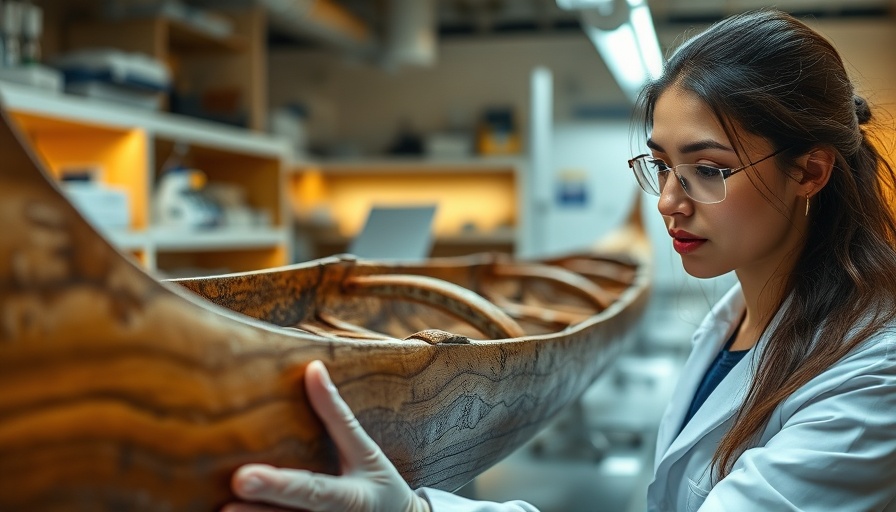
Uncovering Florida's Hidden History: The Mysterious Canoe
In the wake of Hurricane Ian, a fascinating story unfolded in Fort Myers, Florida, when a wooden canoe emerged from the debris. This unexpected discovery has left archaeologists and historians scratching their heads for three long years, as they work to decipher the origins and significance of this "highly unusual" vessel.
What Makes This Canoe So Special?
This canoe, measuring about nine feet in length, is not your typical find in Florida's waterways. Unearthed in 2022, it’s composed of mahogany, a wood that’s rarely used for boats in this region. The Florida Division of Historical Resources (FDHR) has suggested that this material may hint at Caribbean connections. Early examinations indicate it could potentially be a "cayuco," a small dugout canoe favored in Hispanic regions for coastal and riverine travel.
Delving Deeper: The Enigma of Mahogany
Many questions surround the canoe's construction. The FDHR reported that the wood was possibly sourced from either South Florida or the Caribbean, thus still leaving its true origin in question. This inquiry has only intensified the excitement among researchers and the public alike.
In a subsequent post, the FDHR confirmed the discovery may represent the first instance of a canoe built from mahogany in Florida's archaeological records. This revelation opened the door for further investigations, as experts began to explore the implications of this finding on Florida's history and its connections to the Caribbean.
Beyond the Wooden Body: A Peek into the Past
Archaeologists estimate that Florida is home to approximately 450 log boats and canoes across over 200 sites, the highest concentration in the Western Hemisphere. So, how does this newfound canoe play into that history? Experts believe it may date back to the 16th century, a period rich with exploration and early colonial interactions. This timeline marks a significant moment in history, and the canoe could provide vital insights into the cultural exchange between Native Floridians and European settlers.
Conservation Efforts and Ongoing Research
The canoe has undergone extensive conservation efforts to ensure it can be preserved for future study. Specialists utilized minimal intervention techniques, carefully documenting the canoe's condition while stabilizing it for long-term preservation. This painstaking process is vital for maintaining the integrity of such an important piece of history.
As researchers continue to analyze the canoe, they are employing advanced techniques to date it accurately. Radiocarbon testing revealed unexpected results, leading to further mysteries and intrigue about the canoe's true age and the environments in which it was stored before its discovery.
A Broader Conversation: Florida's Watercraft Heritage
Florida holds a critical place in the narrative of watercraft history, especially among Indigenous communities like the Miccosukee and Seminole, who utilized canoes for sustenance and transport throughout the state’s waterways. Historical finds, such as this canoe, deepen our understanding of how these cultures adapted to their environment and the materials they had available.
Moreover, this curious find rekindles discussions about how waterborne travel shaped trade and interactions between diverse communities in the region. The intrigue the canoe has sparked goes beyond mere historical curiosity; it urges a deeper exploration of our shared past.
Future Implications: Connecting Histories
This new discovery not only reinforces Florida's rich archaeological narrative but also connects it to broader themes of exploration and exchange. As researchers refine their analysis, we anticipate exciting revelations that may link Indigenous histories with those of early European explorers in the Americas.
Conclusion: An Invitation to Explore
The story of the Fort Myers canoe represents much more than a simple archaeological find. It's a testament to the tales that hurricanes may unearth, reminding us of the watercraft that have been vital to human movement and survival through the ages. As more discoveries arise, they may allow us to better understand how past communities interacted with their environment.
For those looking to explore history further, it’s worth tracking developments on this canoe. Engaging with local historical societies, visiting museums, or participating in community discussions about Florida’s rich cultural tapestry is a fantastic way to foster a deeper connection to our shared past.
 Add Row
Add Row  Add
Add 



Write A Comment